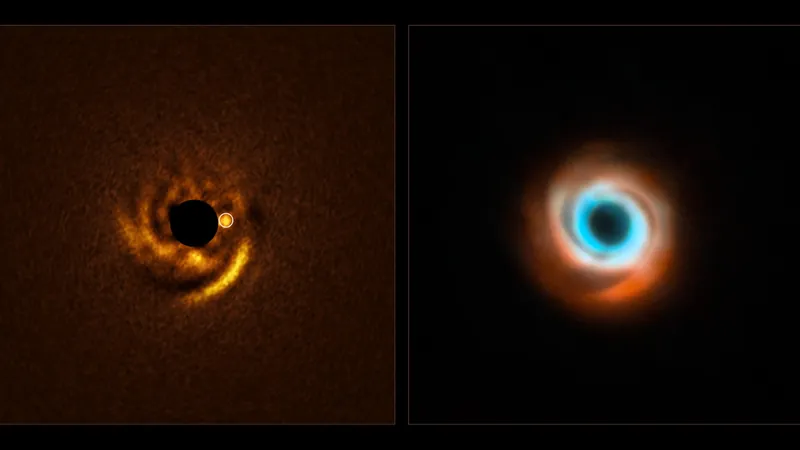
Unveiling a Newborn Planet: Astronomers Capture Stunning Evidence in a Stellar Dust Disk
2025-07-27
Author: Jacques
In an extraordinary revelation, astronomers have discovered a young planet actively shaping its environment within a swirling disk of gas and dust surrounding the star HD 135344B. This groundbreaking finding marks the first time that a planet has been observed embedded within a dust spiral, sculpting intricate arms around its stellar host.
NASA confirms that this discovery enhances our understanding of how planets form from protoplanetary disks—massive, doughnut-shaped formations of gas and dust encircling young stars. These complex structures often show rings and spirals, thought to be influenced by the gravitational pull of emerging planets. However, previous observations lacked direct evidence—until now.
Utilizing the cutting-edge Enhanced Resolution Imager and Spectrograph (ERIS), scientists have identified a planetary candidate nestled at the base of one of the spirals—precisely where computer models had predicted it would be. This intriguing planet is estimated to be twice the size of Jupiter, residing at a distance akin to that between Neptune and the Sun, or roughly 30 times farther than Earth is from our own star.
Francesco Maio, a doctoral researcher at the University of Florence and the lead author of the study, stated, "What makes this detection potentially a turning point is that, unlike many previous observations, we are able to directly detect the signal of the protoplanet, which is still highly embedded in the disc." This direct detection offers a significant boost in confidence regarding the existence of the planet.
Typically, the presence of exoplanets—those that orbit stars beyond our Sun—is inferred from indirect indicators, such as a star’s light dimming when a planet transits in front of it. However, spotting the planet’s own light as it reflects its host star's glow confirms its existence far more conclusively.
"We will never witness the formation of Earth, but here, around a young star 440 light-years away, we may be watching a planet come to life in real time," Maio added, underscoring the significance of this moment.
ERIS has proven crucial in another significant finding as well, with astronomers detecting a possible brown dwarf—an object that lies somewhere between a giant planet and a small star—within the protoplanetary disk of another young star, V960 Mon, located 5,000 light-years away in the constellation Monoceros. These discoveries paint a vivid picture of the dynamic processes of planet formation in distant realms.









 Brasil (PT)
Brasil (PT)
 Canada (EN)
Canada (EN)
 Chile (ES)
Chile (ES)
 Česko (CS)
Česko (CS)
 대한민국 (KO)
대한민국 (KO)
 España (ES)
España (ES)
 France (FR)
France (FR)
 Hong Kong (EN)
Hong Kong (EN)
 Italia (IT)
Italia (IT)
 日本 (JA)
日本 (JA)
 Magyarország (HU)
Magyarország (HU)
 Norge (NO)
Norge (NO)
 Polska (PL)
Polska (PL)
 Schweiz (DE)
Schweiz (DE)
 Singapore (EN)
Singapore (EN)
 Sverige (SV)
Sverige (SV)
 Suomi (FI)
Suomi (FI)
 Türkiye (TR)
Türkiye (TR)
 الإمارات العربية المتحدة (AR)
الإمارات العربية المتحدة (AR)